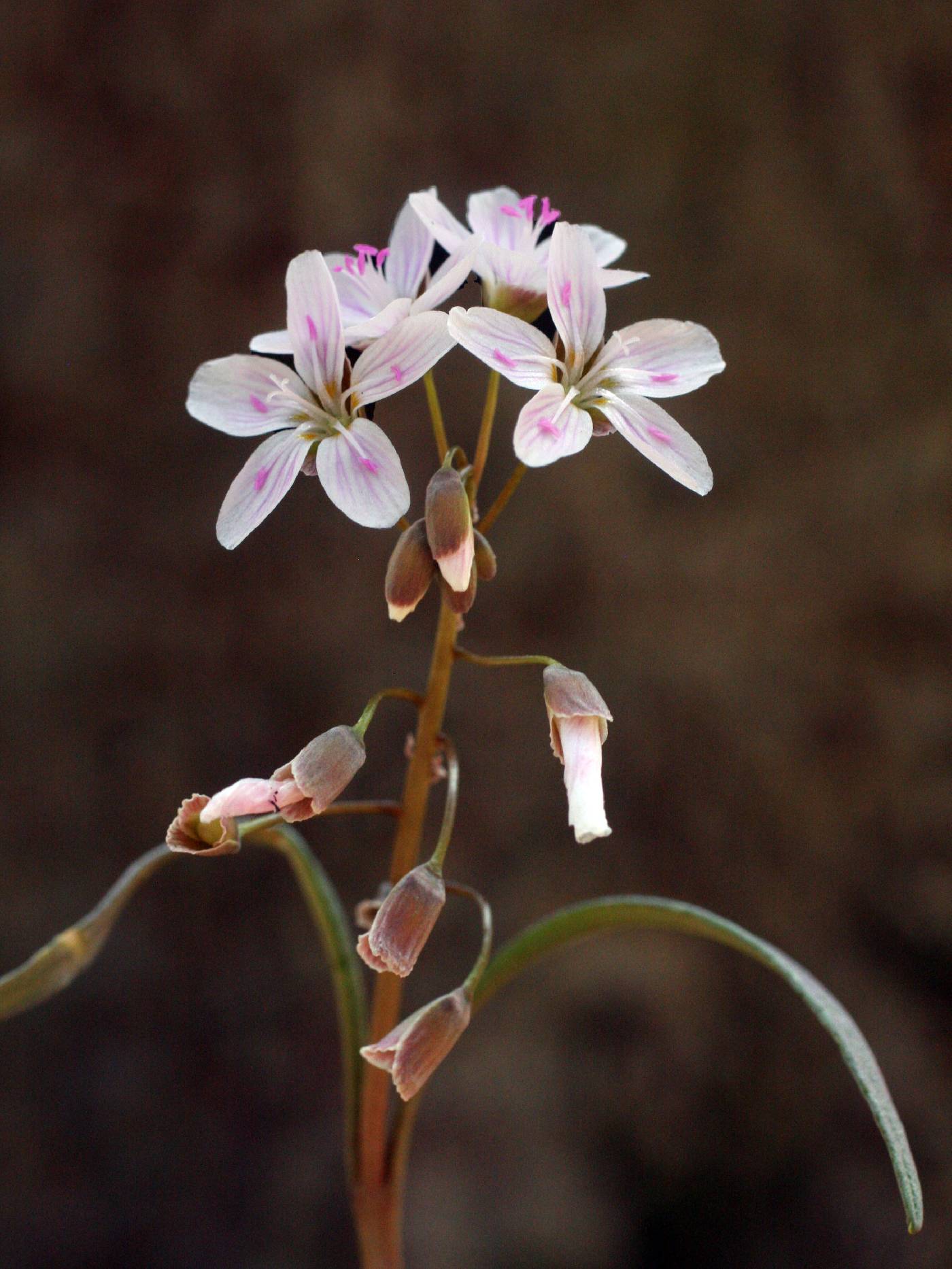
|
Family: Montiaceae |
Herbs, usually annual or perennial, occasionally biennial in Claytonia rubra. Roots branched, capillary or fibrous. Stems: subterranean stems tubers, rhizomes, or woody caudices, sometimes with multiple forms on single individuals (e.g., C. umbellata and C. tuberosa); aerial stems erect or decumbent; nodes glabrous. Leaves basal and cauline, not articulate at base, somewhat to markedly clasping, attachment points linear; basal leaves few to several in rosettes, blade linear, lanceolate, oblanceolate, spatulate, trullate, rhomboid, ovate, or deltate, apex obtuse to apiculate; cauline leaves 2 and opposite, rarely 3 and whorled, distinct or partially or completely connate, or perfoliate, blade linear to ovate. Inflorescences terminal, racemose or umbellate, secund, bracteate; bracts leaflike or membranous and scalelike. Flowers showy; sepals persistent, leaflike, unequal; petals 5; stamens 5, adnate to petal bases; ovary globose, ovules 3 or 6; style 1; stigmas 3. Capsules 3-valved, longitudinally dehiscent from apex, valves not deciduous, margins hygroscopic, involute. Seeds (1-)3-6, black, rounded, shiny and smooth to tuberculate, with white elaiosome; seeds dispersed ballistically and by ants. x = 5, 6, 7, 8. PLANT: Annual or perennial herbs, with corms or taproots. STEMS: simple or branched, erect. LEAVES: basal leaves none to many, entire; cauline leaves 2, opposite, distinct to fully connate into a perfoliate disk; margins entire or cleft; apex sometimes apiculate. INFLORESCENCE: a stalked or sessile raceme or cyme, dense or open; bracts present, minute. FLOWERS: 1-28; sepals 2, ovate; petals 5, pink or white; stamens 5. CAPSULE: with 3 valves. SEEDS: lens-shaped, brown to black, shiny. NOTES: Ca. 26 spp. (3 in AZ) distributed from N. Amer. to e. Asia. Corms of C. lanceolata var. rosea and leaves of C. parviflora and C. perfoliata are edible (Moerman 1998). (for John Clayton, 1694-1773, plant collector). REFERENCES: Allison Bair, Marissa Howe, Daniela Roth, Robin Taylor, Tina Ayers, and Robert W. Kiger., 2006, Vascular Plants of Arizona: Portulacaceae. CANOTIA 2(1): 1-22. Sep 2, herbaceous, ovate, persistent in fr; pet 5, oval or elliptic, spreading; stamens 5, opposite the pet; ovules 6; style with 3 short lobes; capsule ovoid, opening by inrolling valves; perennial herbs from a rounded corm (our spp.) or fleshy taproot, with one or few lvs from the base and a single opposite pair on the stem below the loose terminal raceme; our spp. have delicate glabrous stems 1-3 dm from the corm, lengthening during and after anthesis, the 5-15 long-pediceled fls with pink-veined, otherwise white or pale pinkish (yellow) pet 1-1.5 cm. 10, N. Amer. Gleason, Henry A. & Cronquist, Arthur J. 1991. Manual of vascular plants of northeastern United States and adjacent Canada. lxxv + 910 pp. ©The New York Botanical Garden. All rights reserved. Used by permission. |
This project was made possible in part by the Institute of Museum and Library Services [MG-70-19-0057-19].
Powered by Symbiota



